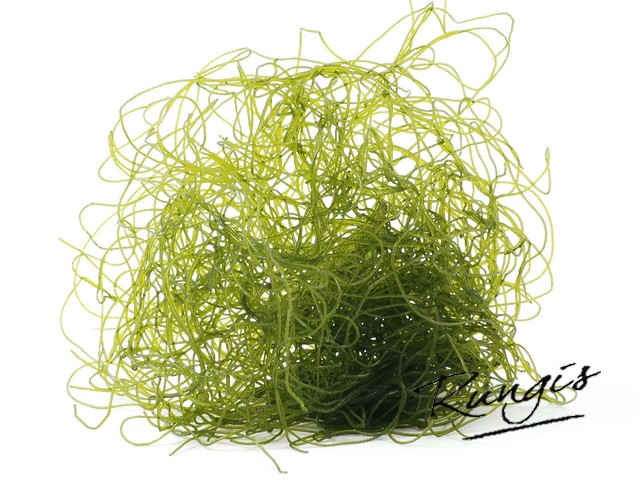Jan Kruijsse: cutting seaweed in the Oosterschelde
When the fleet of cocklefishers got disposed because of govermental decisions , Jan Kruijsse literally lost his livehood by fate.
Luckily he could take over the company of his uncle who fished on knot weeds; decorative but barely edible seaweed which he sells to the oyster trade in Yerseke as an organic bubble wrap. Until Jan went to a Japanese exhibition and at a Japanase stand discovered that he, as there sold as exclusive wakamé, had daily in his hands. A new perspective opened up.
Jan Kruijsse is one of the few in the Netherland who has a licence to cut seaweed. Every day he walks with low water on the tidal shores of the Oosterschelde to harvest red horns seaweed, sea lettuceweed, fishingline weed, Irishmos weed and Japanese sargassum and in the season also wakamé. ‘That last one came this way as an exotic stowaway. Probably in the ships’ ballast water or with imported oysters. It grows extremely well in the Oosterschelde and the chefs love working with it. In total i have at least counted 120 different species of seaweed which are all edible. Edible seaweeds in The Netherlands only grow in The Oosterschelde. Otherwise, you need to go to Brittany or further south for good seaweeds.’
Jan Kruijsse cuts off the seaweed 6 centimeters from the root with a hand scythe. This way it also grows back. ‘With seaweed you clearly have seasons. In February and March i harvest a lot of fishinglineweed, wakamé, sea oakweed and Japanese sargassum, while in summer, when the sea water becomes warmer, you’ll see other species. In summer i mainly harvest lots of green sea lettuceweed and red horns seaweed.’ Kruijsse enjoys the enthusiasm that he receives from chefs who can suddenly work with real fresh seaweed.
Through Rungis
Through Rungis they are all reached. ‘They make the most beautifull dishes with the seaweed. And seaweed is healthy: when eating eighty grams of seaweed, you already have enough vitamins and minerals for that day. Rungis keeps the seaweed in tanks with water from The Oosterschelde. This way the seaweed remains at its best. To get the supply at a constant base, Kruijsse now experiments with a trawl, on wheels, which he pulls over the bottem against the current. The harvest must then be sorted out on the deck. ‘It still is a prototype, but it looks promising,’ he says. Seaweeds can continue to conquer the food industry.
With seaweed you clearly have seasons
At the shore of Brittany lots of seaweeds gets harvested in the wild. The sea lends itself well for it. The fresh seaweed is rinsed with seawater and then pickled in salt. When kept cooled, it will continue to be good for a couple of months. There’s also frozen seaweed from Brittany, but the taste is much less.
Most delicious seaweed from our own country
Recently the most delicious seaweed comes from our own country. The harvest of Jan Kruijsse from Yerseke gets delivered unpreserved and only stays good for 4 days. But therefor the taste is unbeatable. So don’t just chose seaweed but chose seaweed from our own country for the very best.






